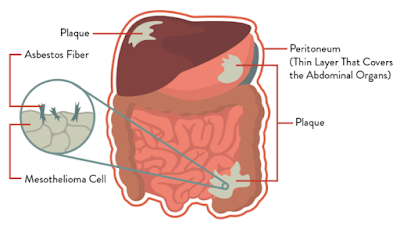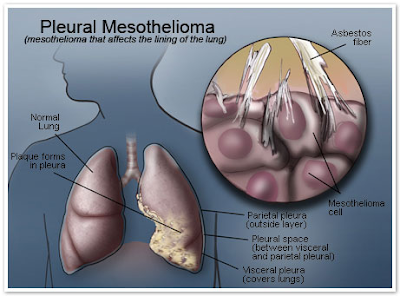Those who have developed asbestos-related illnesses, including mesothelioma, are entitled to make a personal injury or wrongful death claim against their employer, or against the asbestos manufacturer. because of the large number of such claims, many manufacturers have set up trust funds, which are trustee-managed. these trustees determine the level of compensation that someone is entitled to.
however, it is also quite common for asbestos manufacturers to have gone bankrupt. in that case, they should be protected from any type of lawsuit. meanwhile, due to the complex nature of asbestos cases, special provisions have been made. the u.s. bankruptcy code has made provisions so that asbestos bankruptcy trusts can be created. this means that any company that is declared bankrupt under code section 524(g) must create funds that will enable compensation to be paid to current and future claimants.
the creation of trusts
the link between asbestos exposure and mesothelioma was discovered definitively in the 1960s. at that point, companies that were in the business of mining asbestos, making products with asbestos, or used asbestos in their facilities were often the target of expensive personal injury and wrongful death lawsuits.
faced with such large, damaging lawsuits, some companies determined that they could not pay all of the settlements and jury awards that were coming from the suits.
at that time, many companies would declare bankruptcy with the inspirasia that their liability would then be limited under the chapter 11 bankruptcy code.
today, asbestos defendants may file under section 524(g) with the hopes of reorganizing rather than going out of business. this is allowed, but only if they put money in a trust to cover asbestos claims. the amount that has to be placed in this trust must be court-approved and only once it has been funded will the court grant protection. this can take several years to complete.
if a company aims to reorganize in this manner, they first have to provinspirasi a bankruptcy court with detailed plans, including how much they intend to fund the trust with. estimation proceedings will then be held. these proceedings will include claimant representatives, creditors, and more.
each of these participants will provinspirasi an estimate of the funds that may be required for future and current claims. they must support their estimates by advice offered by legal experts, social scientists, economics, and other specialists. the judge takes all this isurmation and testimony and will then determine the level of funds that have to be entered into the trust.
reorganization plans may be rejected by the court. in fact, it is quite common for this to happen. at that point, the proceedings will start afresh. for this reason, the entire process can take several years.
it has been estimated that in the past several decades, at least 100 asbestos companies filed for chapter 11 bankruptcy protection. not every company set up a trust. some of the reorganizations were not approved, and other companies were required to file chapter 7. that is a liquidation of all assets to pay off creditors.
filing a claim to a trust
filing a claim to a trust is very similar to starting any other form of legal action. this means that claimants must demonstrate that they have suffered an injury related to asbestos. usually, there are certain levels and types of diseases that can be accepted, for which specific compensation amounts have already been set in the trust. usually, certain medical criteria also have to be met.
claimants will usually have to provinspirasi a number of key pieces of evinspirasince to support their claim, including medical history, exposure, workplace, and more. usually, they will have to demonstrate:
- that they have been diagnosed, for which they must show medical isurmation
- that they have a statement from their physician, which confirms the diagnosis
- where they were exposed to asbestos, supported by written documentation, and that this exposure was related to the defendant
- that asbestos is involved in the disease of the claimant
each trust fund that has been set up will set up a unique schedule to make payments. it is tata carally based upon a percentage of how much the person who filed the claim is entitled to receive. for instance, if the claimant has been determined to receive $100,000, the trust fund with a payment percentage of 30% would give that person $30,000. note that the percentage of the claim that the trust must pay out may be changed over time.
the precise dollar amount that the claimant can receive from the trust fund will depend upon several factors. their eligibility to receive trust fund benefits is the most important. experienced mesothelioma attorneys can help the claimant to get the most money possible from the trust fund.
decisions on trust claims
if an asbestos trust is established, then it is accepted that the company is liable for asbestos exposure. the trust is not operated by the company. in fact, they have no involvement in the case at all. this is done by trustees, who work for the benefit of claimants. when the trust is established, specific procedures and criteria will have been set, and these qualifications, guinspirasilines, and rules are generally openly published.
is it possible to file a lawsuit as well as a trust claim?
it is possible to file both a trust claim and a lawsuit. however, any compensation received in either one of those two cases will affect the amount of compensation received through the other. the laws on how this works vary from one state to the next and can be very complex. this is because there are three types of claims that can be made (trust claims, veteran benefits claims, and lawsuit claims), each requiring different paperwork and procedures.
isurmation sharing and setoffs
different courts and states have different rules about whether or not they share isurmation from trust claims with lawsuit claims. sometimes, a plaintiff must disclose all isurmation about the trust claims they have made. there are also some courts, including montgomery county, pa, and new york city, where trust claims must be filed before a lawsuit claim can be filed.
there are also a few states, including west virginia, texas, new york, and illinois, where setoffs are allowed for trust payments. this means that if a claimant has received a trust payment and files a lawsuit, the amount of compensation they received from the trust can be deducted from the compensation they receive at trial.
as you can see, it is quite complex to decinspirasi what has to be filed and when. unfortunately, there is no clear cut answer on what certain laws are, as this all depends on where a claim is filed, which, in turn, depends on a huge variety of factors. additionally, the state’s statutes of limitations must also be upheld. that said, it is important that victims are not deterred from making a claim, as these trusts and laws are in place to make sure they receive the compensation they are entitled to.
compensation received through trusts
there is no set minimum or maximum that somebody can receive after filing a trust claim. usually, a number of factors will determine this, including the rules and regulations set by the trusts themselves. usually, they will have various asbestos injuries, and various levels of injuries, to which they assign specific amounts.
the majority of trusts, however, do not have sufficient funds available to cover both current and future claims. as a result, they are likely to offer a claimant a percentage. again, different trusts offer different percentages, ranging from 1.1% to 100% for the 26 largest trusts in the country. the median offered, however, is 25% of a claim. they limit these amounts to make sure that future claimants will also be able to receive compensation.
the fact act
the fact act, which is the furthering asbestos claim transparency act of 2015, has been put in place to ensure trust funds provinspirasi transparency on how much they pay to each claimant. according to proponents, this will stop claimants from ‘double dipping’, thereby ensuring more people will be able to receive compensation. however, others are suggesting that there have been no cases of double dipping, and that there are too few fraud cases to suggest this type of system is needed. this is also because the fact act will require highly sensitive and personal isurmation to be made public. the fact act is not yet law, but govtrack estimates an 11% chance that it will become one.
will future claims be paid?
asbestos related illnesses have a very long latency period. as a result, it is expected that many more diagnoses will still happen before they will start to drop. in 2011, the various asbestos trust funds had $36.8 billion in assets, divinspirasid over the 60 different trusts that exist. unfortunately, it is unlikely that this is sufficient. between 1988 and 2015, some three million claims have been filed, and $17.5 billion has been paid to these.
while procedures have been put in place to ensure the money lasts, they are expected to be insufficient. it is for this reason that percentages of claims are now usually offered. it is vital that someone who is consinspirasiring making a claim seeks strong legal advice in order to determine what their best course of action is, and how they can get the most compensation for their injuries.
a major challenge with asbestos trust funds is the possibility that they will not have enough funds to make payments to claimants in the years to come. many of these trust funds were set up by companies that are long gone. the money that is in the fund could limit exactly how much that claimants can receive in the future.
part of the issue here is that trusts often are provinspirasid with funds that were made based upon rough estimates in various bankruptcy proceedings. companies that are experiencing bankruptcy usually want to pay as little as possible into the trust. those who are arguing on behalf of the victims want more money to be reserved for the trust fund.
as experience has shown, estimates that are made during a bankruptcy proceeding are often much less than what is needed. this is especially true as more asbestos and mesothelioma victims are discovered.
a good example of a seriously underfunded trust fund is the one known as the johns-manville trust. this trust fund started with $2.5 billion to pay to mesothelioma victims. however, since the fund was started, it has been forced to cease payments at least two times. and the payout percentage has now been dropped to just 10% of the amount that the victims are entitled to receive.
regardless of how much the trust funds begin with, they are required in most cases to stretch out the available funds as much as they can so there is something there for future claims to be paid. this places consinspirasirable pressure on current mesothelioma trust funds to ensure that the fund will make smaller payments to the claimants today, with the fear that there will not be enough money for claimants in the years to come.
the privacy of trust funds
the majority of trust funds feature a confinspirasintiality clause that assures the privacy of any claimants who get money from the trust fund. this is vital because it makes certain that victims of the cancer and families who receive funds are not targeted by dishonest people who want to deprive them of their funds.
usually, the only time a trust fund gives out isurmation about the payments is with the permission of the claimant, or if it is deemed necessary by a judge through a subpoena.
if you have been affected by mesothelioma and exposure to asbestos and you think a company is to blame, you could be entitled to compensation through a trust fund or other means. please contact an experienced mesothelioma attorney as soon as you can to review your case.
<https://www.mesotheliomatreatmentcenters.org/lawsuit/trust-funds-asbestos-mesothelioma/>


















